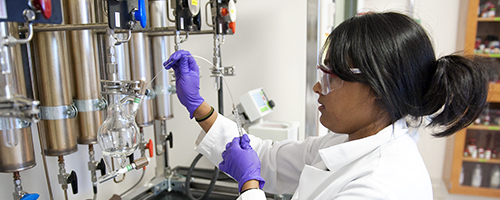A stereoselective hydroxylation step of alkaloid biosynthesis by a unique cytochrome P450 in Catharanthus roseus
Abstract
Plant cytochrome P450s are involved in the production of over a hundred thousand metabolites such as alkaloids, terpenoids, and phenylpropanoids. Although cytochrome P450 genes constitute one of the largest superfamilies in plants, many of the catalytic functions of the enzymes they encode remain unknown. Here, we report the identification and functional characterization of a cytochrome P450 gene in a new subfamily of CYP71, CYP71BJ1, involved in alkaloid biosynthesis. Co-expression analysis of putative cytochrome P450 genes in the Catharanthus roseus transcriptome identified candidate genes with expression profiles similar to known terpene indole alkaloid biosynthetic genes. Screening of these candidate genes by functional expression in Saccharomyces cerevisiae yielded a unique P450-dependent enzyme that stereoselectively hydroxylates the alkaloids tabersonine and lochnericine at the 19-position of the aspidosperma-type alkaloid scaffold. Tabersonine, which can be converted to either vindoline or 19-O-acetylhörhammericine, represents a branch point in alkaloid biosynthesis. The discovery of CYP71BJ1, which forms part of the pathway leading to 19-O-acetylhörhammericine, will help illuminate how this branch point is controlled in C. roseus. © 2011 by The American Society for Biochemistry and Molecular Biology, Inc.


